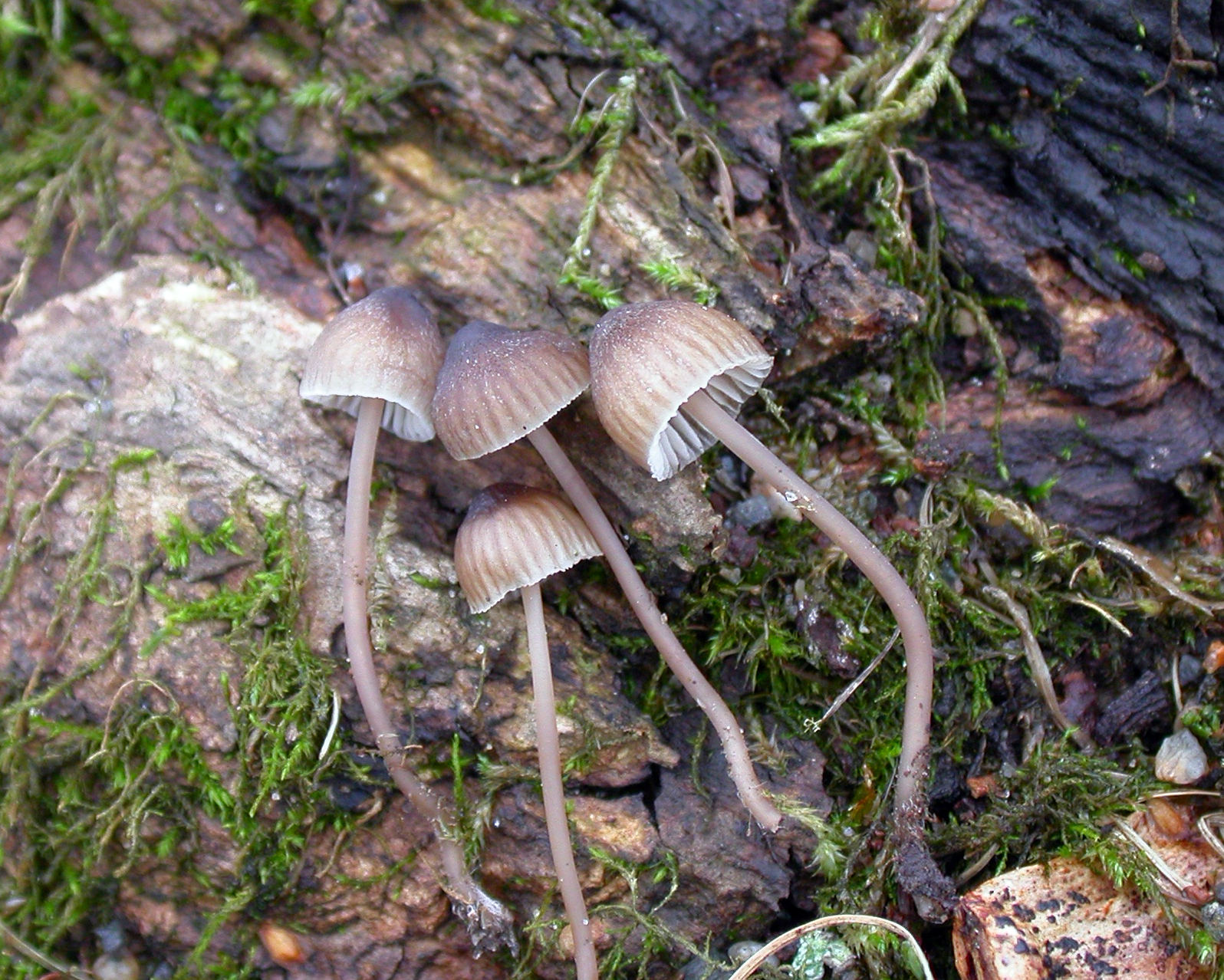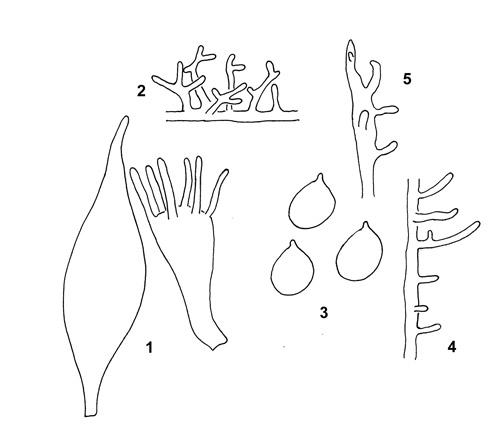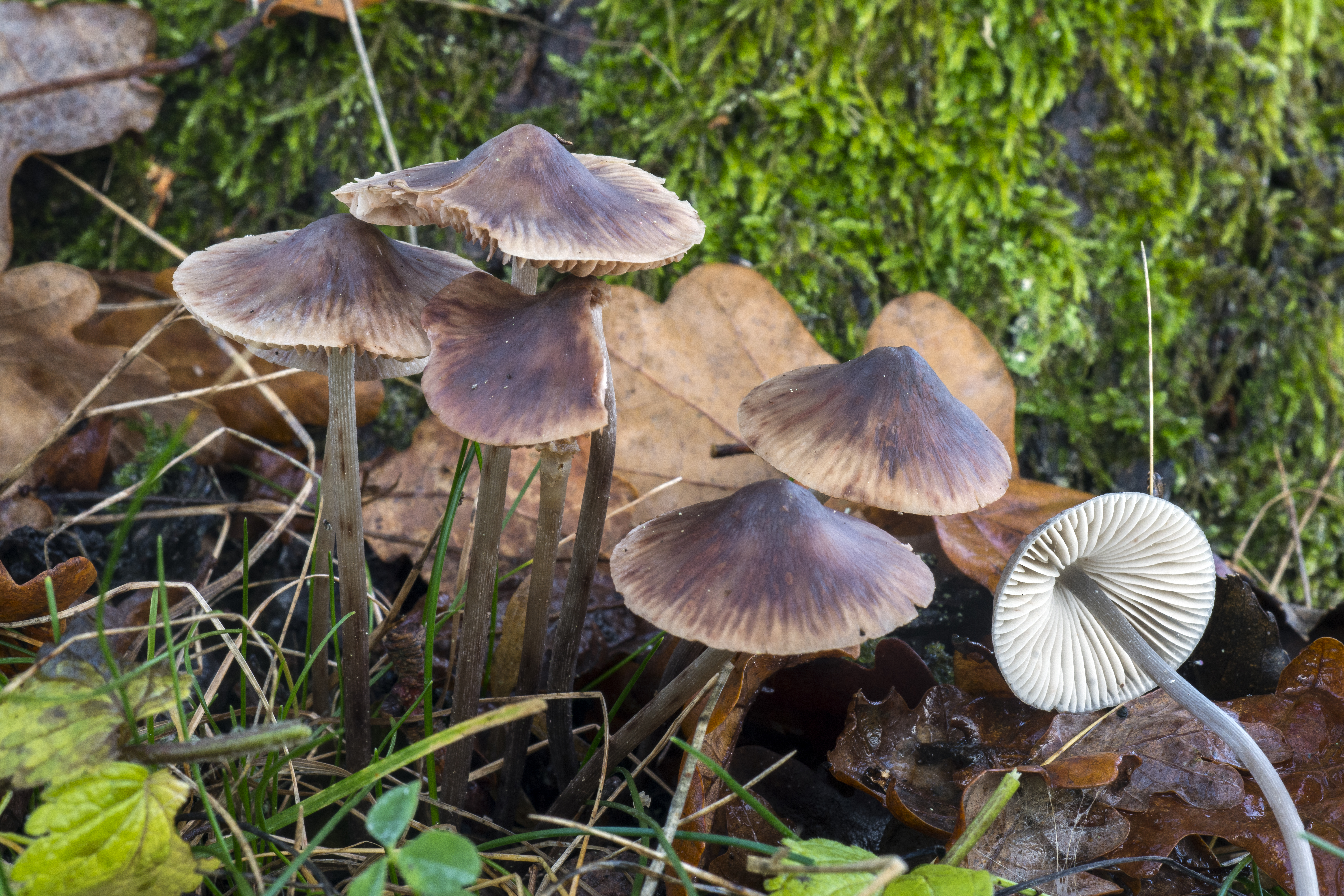Mycena erubescens
Mycena erubescens
Description
1. Two types of cheilocstidia, 2. Hypha of the pileipellis, 3. Spores, 4. Hypha of the cortical layer of the stem, 5. Terminal cell.
Cap 5-15 mm, hemispherical, conical, campanulate to convex, dry, sulcate, translucent-striate, pruinose, glabrescent, sometimes at first bluish grey becoming brown, darker in the centre, or dark blackish brown with bluish black centre, fading to pale brown with the centre somewhat darker. Gills 15-21 reaching the stem, adnexed, occasionally with a short decurrent tooth, white to grey-white or sometimes pale brown, the edge paler, occasionally with red spots. Stem 10-45 x 0.5-1.5 mm, cylindrical, equal, pruinose, glabrescent, somewhat cartilaginous, at first greyish brown to brown with bluish grey apex, then grey-brown to dark brown, exuding a watery-whitish fluid when cut; base covered with long, white fibrils. Flesh in stem base staining reddish brown when cut. Odour indistinctive. Taste very bitter. Basidia 22-28 x 8-11 µm, clavate, 2-spored (rarely 4-spored). Spores (7.8-)9.5 - 12 x 6.5 - 8.5(-9) µm, Q = 1.3-1.7, Q av ˜ 1.5, broadly ellipsoid, amyloid. Cheilocystidia 20-66 x 8-19 µm, forming a sterile band, strikingly variable, fusiform, smooth, sometimes narrowed into a shorter or longer neck, or clavate, covered with few to numerous, coarse, simple to branched, straight to curved or flexuous excrescences 3.5-11 x 1.5-2.5 µm, or all kinds of intermediate shapes. Pleurocystidia numerous, fusiform, often longer than the cheilocystidia, generally filled with refractive globules. Lamellar trama dextrinoid. Hyphae of the pileipellis 1.5-3 µm wide, covered with more or less curved, simple to branched, cylindrical excrescences 3-10(-20) x 1-2 µm, which may form dense masses and tend to become somewhat gelatinized. Hyphae of the cortical layer of the stem 1.5-3.5 µm wide, fairly sparsely covered with cylindrical excrescences, terminal cells infrequent, diverticulate. Clamps absent (present in all tissues in the 4-spored form).
Ecology and distribution
Solitary, in small groups or rarely subfasciculate on moss-covered trunks of deciduous trees (e.g. Acer, Fagus, Quercus). Autumn. Rather rare i Norway, only known from southern parts of the country.


